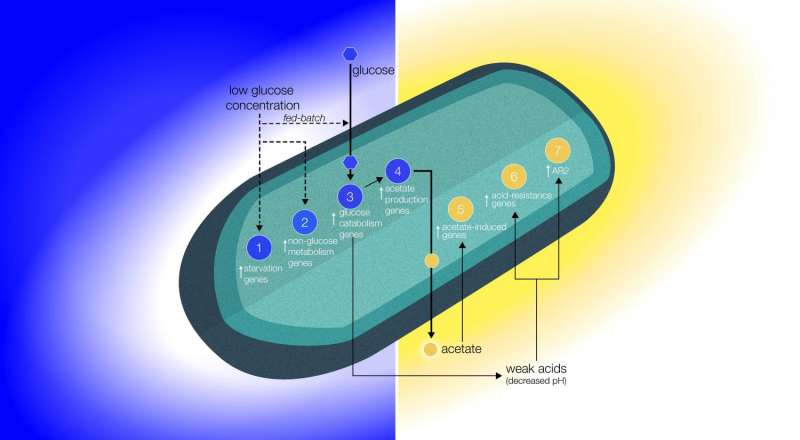Altered bacterial behavior in space may result from reduced extracellular transport

Reduced extracellular transport of molecules may explain changes in bacterial behavior in space, according to a study published November 2, 2016 in the open-access journal PLOS ONE by Luis Zea from the University of Colorado, Boulder, and colleagues.
Understanding the behavior of bacteria in space is important for protecting astronauts on long spaceflights, and previous research has shown that bacteria behave differently in the microgravity environment of space. For example, in space, bacteria multiply to higher numbers and in some cases are more virulent and less susceptible to antibiotics. Researchers had previously theorized that this behavior results from the lack of gravity reducing the movement of extracellular molecules and leading to reduced nutrient availability, however, there was little evidence to support this theory.
To gain more insight into the reduced extracellular transport model, the authors of the present study compared gene expression between E. coli grown at the International Space Station and grown on Earth. The authors found that in space, bacteria expressed more genes associated with starvation conditions, including genes encoding proteins for amino acid synthesis, glucose breakdown and use of alternative carbon sources. This pattern of gene expression is likely a reaction to reduced glucose availability, supporting the model of reduced movement of molecules in the bacteria's extracellular environment.
This new gene expression data therefore provides additional evidence that the altered behavior of bacteria in space results from decreased gravity driving reduced extracellular transport of molecules. Future spaceflight experiments that examine a variety of other bacterial species under differing growth conditions could help explain changes in bacterial growth and virulence that could significantly affect people living in space.
"The microgravity environment of the International Space Station is now being used for myriad lines of research, for example: vaccine development, finding novel molecular targets against drug-resistant pathogens, and testing of molecules to be used against osteoporosis or cancer," Zea says. "This new understanding of how extracellular biophysical processes initiate mechanical transduction signals in bacteria in space may serve not only to protect astronauts as they venture beyond Earth orbit, but these other lines of research as well."
More information: Zea L, Prasad N, Levy SE, Stodieck L, Jones A, Shrestha S, et al. (2016) A Molecular Genetic Basis Explaining Altered Bacterial Behavior in Space. PLoS ONE 11(11): e0164359. DOI: 10.1371/journal.pone.0164359
Journal information: PLoS ONE
Provided by Public Library of Science




















